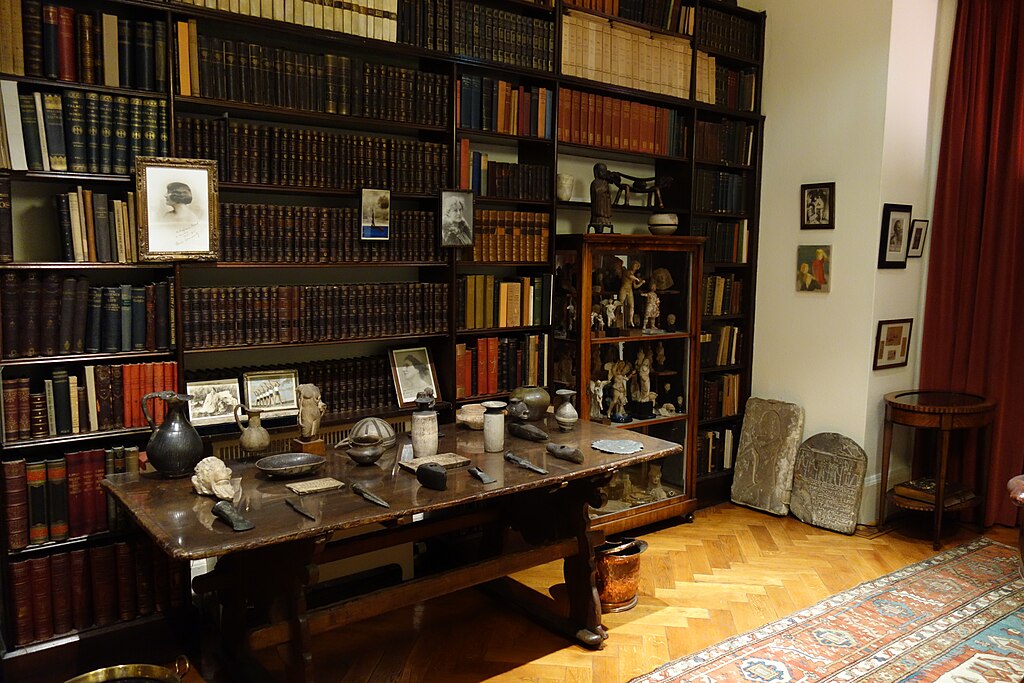Leisure • Art/Architecture
How Industry Restores Our Faith in Humanity
On the evening of 10th November 1827, a much-publicised banquet was held in London. What set it apart from the many other festivities of the social season was the fact that it took place deep underground, in the first completed section of the first tunnel ever built under the River Thames.
It was a glamorous affair. Fifty guests sat down at a huge table illuminated by gas chandeliers; the place of honour was occupied by the greatest celebrity of the day, the victor at the Battle of Waterloo, the Duke of Wellington; patriotic songs were sung and at midnight a shovel and a pick-axe were brought in and a toast was drunk to the labourers involved in the construction of what was recognised as a marvel of art and science. The whole event was commemorated in a painting, commissioned from one of the most fashionable and popular artists of the era.

Over the next few days, tens of thousands of people not fortunate enough to be on the invitation list had the chance, for a modest fee, to descend the shaft and admire the beautiful vaulting and elegant detailing of a new transport link.
Considering the event from our own vantage point, one might be struck by how little of this we do today. We, too, are surrounded by wonders of engineering and design, but we no longer give toasts in honour of bridges, pause to wonder at the alloy fan blades of our airplane engines, notice our transmission towers, pay homage to power stations, or even register our door handles.
For most of history, it was very different. The Romans were profoundly impressed by their road systems and the mechanics of their water supply; their engineering projects were a logical focus of their cultural pride. In 18th-century Venice, the Arsenale di Venezia – for centuries the world’s largest ship-building yard – was a major attraction; tourists came in large numbers to watch ships being assembled and repaired. An especially well-heeled visitor might even take home a memento in the form of a painting of the yard by the priciest of contemporary artists, Canaletto. Art was in the service of engineering, not the other way around.

In the 19th century, the admiring prophet of modernity, Walt Whitman, revealed his awe at the care that had gone into fashioning technological civilisation:
Shapes of factories, arsenals, foundries, markets
Shapes of the two-threaded tracks of railroads
Shapes of the sleepers of bridges, vast frameworks, girders, arches.
Walt Whitman, Song of the Broad-Axe, 1856
Our technology is yet more impressive, but our powers of appreciation have been reduced to nothing. It would be deeply unusual, even suspicious, to pause and admire the bold sweep of a concrete bridge over an alpine valley. Civilised people aspire to appreciate the great works of philosophy. Very few know or even care that a distinguished philosopher happened also to design an exemplary set of radiators and doorhandles, which he thought far surpassed the intelligence of his better known work, Tractatus Logico-Philosophicus.

If this neglect matters, it is because it is perilously easy to give up on human beings when we consider ourselves only in terms of what we get up to in politics or our private lives, in warfare or in ecology. The evidence from our news media is of insistent mania, querulousness, cruelty and self-absorption. We would have so many reasons to turn away from our species in lasting disgust.
If we want to keep a little faith in our own kind, however, it is possible to look elsewhere. In an average elevator, for example, lies a powerful covert argument against depression and misanthropy. This machine may never attract notice or praise, yet it is a summit of achievement in the quality, thoughtful dedication that went into making it. In the background of a plain ascending and descending box is a grand history of science and mechanics and an astonishing system of regulation and care that ensures that we can be safely transported in seconds down to the vault-like concrete garage or up to the observation deck at the touch of a button.
Likewise, while a commercial port isn’t currently on any of our lists of places to visit, it should be recognised as a sublime result of a vast creative and organisational collective effort. Similar wonder can be applied to the operating theatre of a hospital, a research laboratory, the loading bay of a supermarket, a sewage plant, an electricity substation, a motorway intersection, an airport control tower, a factory assembly line or an underground station.

There is every reason to be appalled by our race. But to retain a vestige of hope, we should look not at our books or our articles, our laws or our economic forecasts, our film award ceremonies and campaigns for justice, but at our docksides and warehouses, at our circuit boards and surgical instruments, at our flyovers and radar stations. Here, away from all grandstanding and sentimentality, viciousness and hard-heartedness, remain a host of convincing reasons to remain very proud of being human.


















